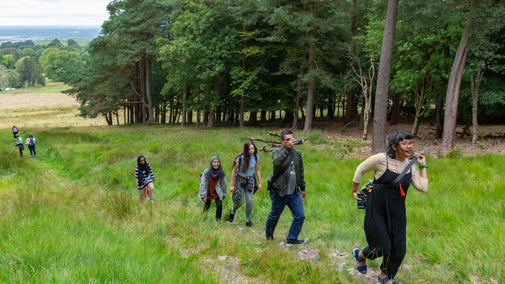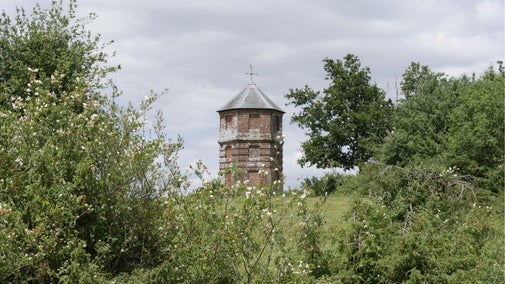Pepperbox Hill trail
Wiltshire
This is a fairly long and moderately challenging walk through woodland, farmland, scrubland and past chalk grassland brimming with butterflies. The route passes the Pepperbox, a 17th-century brick folly which stands at a high point on the chalk escarpment, and which gets its name from a resemblance to a Georgian box used to hold valuable peppercorns. The trail is also rich in birdlife, with bullfinches, green woodpeckers, kestrels and yellowhammers to be spotted.
Near to
Pepperbox HillStart point
Pepperbox Hill National Trust car park, grid ref: SU211248Trail information
More near here
Mottisfont estate walk
HampshireDiscover the beautiful, diverse Mottisfont estate on a varied circular walk through ancient woodlands, historic farmland and Mottisfont village.

A walk around Cathedral Close, Salisbury
While visiting Salisbury, take this walk around the historic Cathedral Close and soak up the atmosphere and history of this special place.

Walk to the Huff Duff
HampshireA circular walk from Ibsley to Rockford Commons, taking in military history with a visit to the Huff Duff (a wartime directional station) and wildlife to spot along the way.

Hale Purlieu figure of eight walk
HampshireA figure of eight walk through Hale Purlieu, crossing streams and taking in great views across the valleys and mires of the New Forest's Northern Commons.

Get in touch
Pepperbox Hill, A36, 6 miles south of Salisbury, Salisbury, Wiltshire, SP5 3QL
Our partners

We’ve partnered with Cotswold Outdoor to help everyone make the most of their time outdoors in the places we care for.
You might also be interested in
Walking
Explore some of the finest landscapes in our care on coastal paths, accessible trails, woodland walks and everything in between. Find the best places to walk near you.

Our work at Pepperbox Hill
Discover how exactly National Trust rangers are helping orchids and butterflies to thrive, with a little help from a hungry herd of local cattle.

Walking in Wiltshire
From walking in the footsteps of King Alfred to exploring the county's mysterious ancient monuments, these are some of the best walks in Wiltshire.

Staying safe at National Trust places
The special places in National Trust care sometimes come with a few risks for visitors, be it coastline or countryside. Find out how to keep safe throughout your visits.

Follow the Countryside Code
Help to look after National Trust places by observing a few simple guidelines during your visit and following the Countryside Code.

Cotswold Outdoor: our exclusive walking partner
Learn about the National Trust’s ongoing partnership with Cotswold Outdoor. Find out how they help us care for precious places and the exclusive discount available for National Trust supporters.

